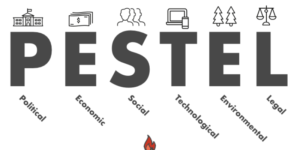Communication skills are essential to succeed in both professional and personal contexts, influencing how people build relationships, resolve conflicts, and convey ideas. This article identifies four fundamental practices—listening and reflecting, note-taking, clarifying questions, and mindful responses—as key techniques to enhance communicative competence. These practices align with core theories in interpersonal communication, emotional intelligence, and mindfulness-based communication, as explored in recent research and textbooks (Worthington, Bodie & Fitch-Hauser, 2024; Brownell, 2015; Zaripour, 2024). This essay explores each method in detail, integrating academic perspectives and real-world examples using the Harvard referencing style.
1.0 Listen and Reflect: The Foundation of Empathic Communication
Listening and reflecting constitute the cornerstone of effective communication. According to Worthington, Bodie and Fitch-Hauser (2024), active listening involves more than hearing words—it requires understanding intent, emotion, and context. Reflective listening, a concept popularised in counselling and leadership communication, entails paraphrasing and summarising the speaker’s message to confirm understanding (Brownell, 2015). This process enhances mutual respect and empathy, key components of emotionally intelligent communication (Goleman, 2019).
For instance, in healthcare settings, clinicians trained in reflective listening demonstrate improved patient satisfaction and treatment adherence (Glasgow, 2024). By echoing main points and acknowledging emotional undertones, listeners validate the speaker’s experience, fostering trust. The technique is equally valuable in leadership; research by Costigan and Brink (2020) indicates that leaders who engage in reflective communication are perceived as more credible and approachable. Thus, listening and reflecting do not merely transmit information—they build the psychological safety necessary for collaborative dialogue.
2.0 Note-Taking: Enhancing Retention and Avoiding Miscommunication
Note-taking is often underestimated in its contribution to communication excellence. It serves as a cognitive aid, enhancing information retention, clarity, and focus during conversations (Siegel, 2020). Studies in education and workplace communication have shown that structured note-taking fosters active engagement rather than passive reception (Johnson & Scott, 2014). The act of jotting down key ideas also helps avoid misunderstandings by providing a written anchor to refer back to during future discussions.
Meenambigai and Lokeshwaran (2021) describe note-taking as a dual process involving both listening and synthesising, allowing individuals to filter relevant content while discarding redundancy. This aligns with cognitive load theory, which suggests that externalising information through notes reduces memory strain and increases comprehension (Zaripour, 2024).
An illustrative example comes from corporate environments where managers use meeting notes not only to document but also to identify patterns and insights from discussions. According to Hopkins and Reid (2024), this practice transforms conversations into actionable intelligence, strengthening decision-making. Furthermore, in education, structured note-taking models such as the Cornell Method are widely used to improve comprehension and reflection, reinforcing how note-taking bridges listening with deeper understanding.
3.0 Clarifying Questions: Deepening Understanding through Inquiry
Asking clarifying questions is a hallmark of critical and mindful communication. It demonstrates curiosity, engagement, and a commitment to accuracy. Clarification reduces assumptions and prevents misinterpretations—an essential feature of interpersonal competence (Basha, Margret & Divya, 2020). The technique reflects the Socratic method of dialogue, where questioning is used to uncover meaning and promote deeper insight (Adler, 1997).
Research by Spielman (2022) in leadership communication programmes found that participants who incorporated clarifying questions during discussions exhibited greater emotional intelligence and relational awareness. This practice fosters open dialogue, as speakers feel valued and understood. Similarly, Zaripour (2024) argues that clarifying questions demonstrate cognitive empathy—the ability to step into another’s frame of reference—which enhances collaborative problem-solving.
A practical example is evident in customer service and coaching contexts, where asking “Can you elaborate on what you meant by that?” or “Would you like to prioritise this aspect first?” not only ensures understanding but signals attentiveness. In team settings, leaders who model inquiry-based communication create environments that encourage innovation and collective reasoning (Costigan & Brink, 2020). Hence, clarifying questions are not simply a linguistic tool but a strategic practice that sustains accuracy and mutual respect in dialogue.
4.0 Mindful Responses: Communicating with Awareness and Respect
Mindful communication integrates awareness, presence, and compassion into verbal exchanges. It involves responding deliberately rather than reacting impulsively—a distinction that cultivates respect and understanding. As Arendt, Verdorfer and Kugler (2019) note, mindfulness enhances emotional regulation and attentiveness, both critical for effective interpersonal communication.
Mindful responses require listening with full attention and pausing before speaking, allowing one’s thoughts to align with intentions. This aligns with Brownell’s (2015) “HURIER Model” (Hearing, Understanding, Remembering, Interpreting, Evaluating, Responding), where response is a conscious act informed by understanding and empathy. In professional settings, mindfulness practices have been shown to reduce conflict and increase team cohesion (Warkentin & Filipovic, 2019).
For instance, organisations such as Google and SAP have introduced mindfulness-based leadership programmes to help employees respond constructively during high-stress interactions. These programmes improve psychological flexibility and communication accuracy (Arendt et al., 2019). In healthcare, Glasgow (2024) found that practitioners using mindful communication techniques reported fewer burnout symptoms and improved patient rapport. The power of mindful responses lies in their ability to harmonise thought, emotion, and language—a triad essential to authentic and compassionate communication.
Integrating the Four Skills: A Holistic Model for Effective Communication
The four strategies—listening and reflecting, note-taking, clarifying questions, and mindful responses—are interdependent and mutually reinforcing. Together, they form a holistic framework for interpersonal competence. Listening provides understanding, note-taking captures and consolidates it, clarifying questions refine it, and mindful responses express it. This sequence mirrors Brownell’s Listening Model (2015) and Goleman’s Emotional Intelligence Framework (2019), which position awareness and empathy as central to communication mastery.
In educational contexts, students who employ these combined strategies demonstrate higher academic performance and social satisfaction (Kohl-Hamilton, 2022). In workplaces, leaders who apply reflective and mindful communication techniques foster trust, engagement, and organisational cohesion (Costigan & Brink, 2020). The growing inclusion of communication modules in leadership and professional development programmes underscores the strategic importance of these skills (Zaripour, 2024).
Improving communication is not a one-time exercise but an evolving process that involves continuous self-awareness, reflection, and empathy. The four approaches outlined—listening and reflecting, note-taking, clarifying questions, and mindful responses—are more than mere techniques; they represent an ethical and cognitive framework for connecting meaningfully with others. Supported by research from leading scholars such as Brownell (2015), Worthington et al. (2024), and Goleman (2019), these practices form the foundation of authentic human communication in an increasingly digital and distracted world.
Communication begins not with speaking, but with listening—and culminates not in reaction, but in understanding. Adopting these practices enables individuals to not only convey their thoughts effectively but also create dialogue that transforms relationships, organisations, and communities.
References
Adler, M. (1997) How to Speak, How to Listen. New York: Simon & Schuster.
Arendt, J.F.W., Verdorfer, A.P. & Kugler, K.G. (2019) ‘Mindfulness and leadership: Communication as a behavioural correlate of leader mindfulness and its effect on follower satisfaction’, Frontiers in Psychology, 10(667).
Basha, S.M.D.T., Margret, S.N. & Divya, N.S. (2020) An Understanding of Active Listening as a Significant Soft Skill: A Study. International Journal of Education and Social Science, 7(4), pp. 30–37.
Brownell, J. (2015) Listening: Attitudes, Principles, and Skills. 5th ed. New York: Routledge.
Costigan, R.D. & Brink, K.E. (2020) ‘Developing listening and oral expression skills: Pillars of influential oral communication’, Journal of Management Education, 44(2), pp. 202–217.
Goleman, D. (2019) The Emotionally Intelligent Leader. London: Bloomsbury.
Glasgow, N.D.P. (2024) Listening, Empathy and Feedback: Essential Skills for Physiotherapists. Edinburgh: Elsevier.
Hopkins, D. & Reid, T. (2024) The Academic Skills Handbook: Your Guide to Success in Writing, Thinking and Communicating at University. London: Sage.
Johnson, S. & Scott, J. (2014) Study and Communication Skills for the Biosciences. Oxford: Oxford University Press.
Kohl-Hamilton, J.J. (2022) Effective Listening Practices for College Students. Morehead State University.
Meenambigai, J. & Lokeshwaran, M.D. (2021) Communication Skills and Personality Development. Chennai: Himalaya Publishing House.
Siegel, J. (2020) Developing Notetaking Skills in a Second Language: Insights from Classroom Research. London: Routledge.
Spielman, J. (2022) Developing and Advancing the Listening Lift Program to Improve How Leaders Listen. Clemson University.
Worthington, D.L., Bodie, G.D. & Fitch-Hauser, M.E. (2024) Listening: Processes, Functions, and Competency. London: Routledge.
Zaripour, M. (2024) Mastering the Art of Communication: Techniques for Effective Listening, Persuasion, and Conflict Resolution. New York: Taylor & Francis.









